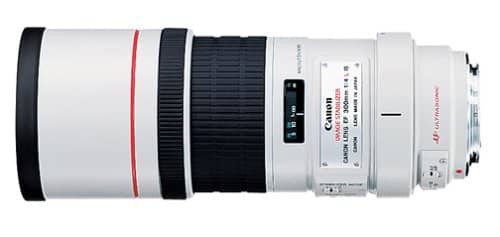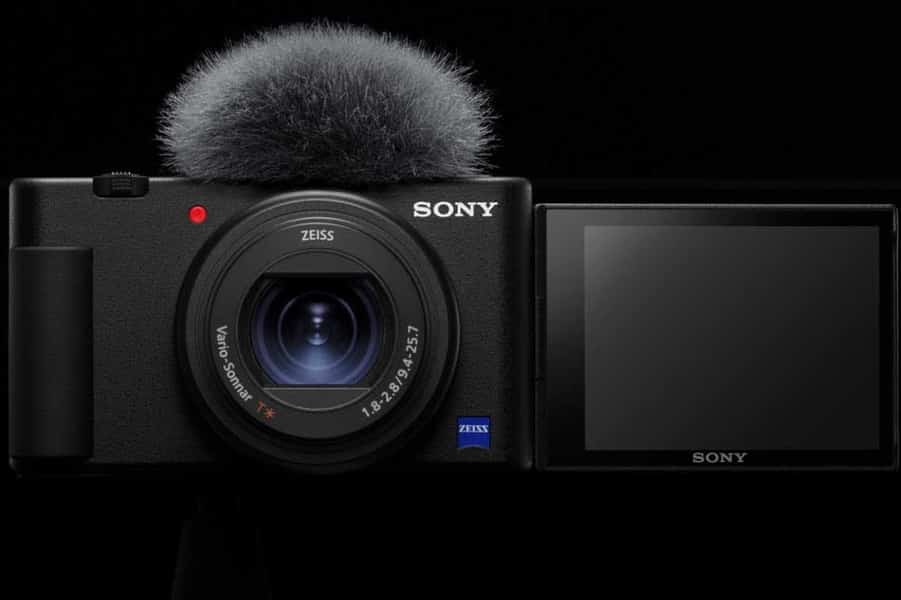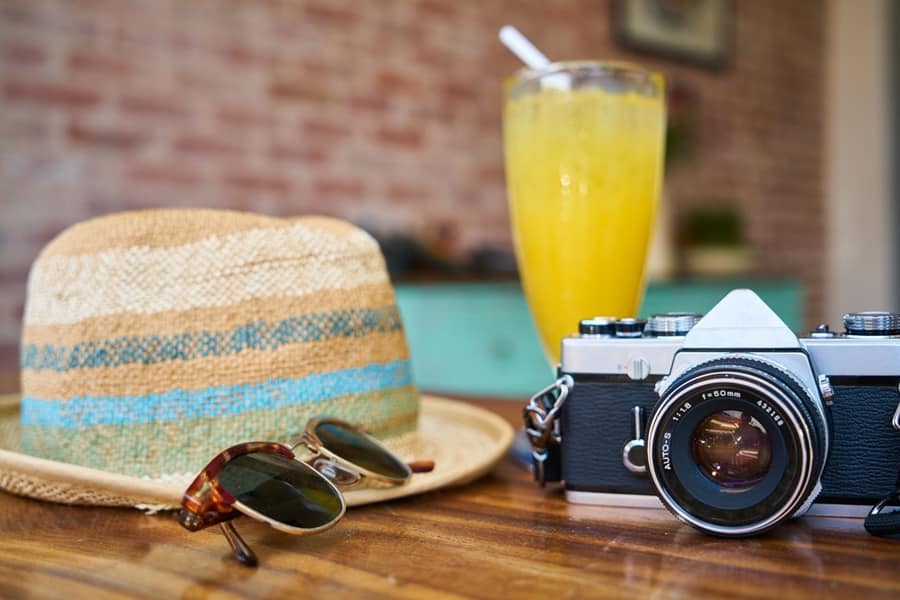In both photo and video, one of the most important choices you will make will be the purchase of your camera, currently it exists in the entire price range. From simple to around $200 at the most expensive up to $6500 for the Canon 1 DX case alone. How we can counter it all will depend on your means and whether we want to do it. Then comes the thorny problem of the lens. Indeed, there are available on all prices but the cheaper ones are often of less good qualities. So, here too you will have to choose a lens for DSLR according to your requirements.
Only that is a quality goal will bring you satisfaction whatever the situation while an average device may disappoint you in difficult situations.
In this article we will only deal with Canon lenses but the problematics are the same as for other brands like Sony, Nikon, Pentax, Sigma, Tamron, Zeiss, etc…
Canon Lens EF 75-300 III F4-5.6 USM
So let’s assume that you are an amateur and that for you the photo is just memories and that your pleasure lies only in the fact of making them, in this case you will opt for a standard lens with zoom to cover a whole range of focal lengths and this will be enough to immortalize your memories without packing the piggy bank.
On the other hand, you are a demanding amateur or professional and there the photos or videos must be impeccable with a pique or bokeh irreproachable. In this case you will have to invest in goals that will cost you a second box, but rest assured the purchase will be for life if you take care of it.

Get Canon EF 300 mm f/2.8 L IS II USM Super Telephoto Lens on Amazon
Operation of a Lens
Lenses are made up of lenses that focus light on the sensor of your device. In a compact style device, it is fixed to the device while on the reflexes you can change them as you see fit respecting the compatibility of rings or mounts (EF-EF-S or EF-M).
The quality of a lens is determined by several criteria, first of all its size, the bigger it will be the better it will let the light pass, the more quality it will be and you will have less problem of vignetting (darker corners than the rest of the image), focus, chromatic aberrations (uneven colors) and distortions (deformations).
You will tell me that some compacts make very nice pictures with standard lenses, of course, but this is due to the fact that they are permanently fixed on the case and so the manufacturers have developed many techniques to correct the aberrations that they can generate.
For interchangeable lenses we will have to choose those that meet our expectations for a specific use, we will not buy a lens for macro if we make landscape or a wide angle if we make mainly detail photos.
On a quality lens we will have at the bottom a dozen lenses that will be responsible for bringing light to the sensor, the light quality will depend directly on the quality of these lenses. The better the lenses are and the more we will have a picture with piqued, without deformation, chromatic aberration or vignetting. But what you need to know is that each goal has its own manufacturing and its own flaws that you need to know to get the most out of it.
A site allows to compare the image obtained by choosing its focal and aperture, we see the result of the lenses on a standard sight.
The Characteristics of a Lens
Canon Lenses are Characterized By: Mount Type (EF / EF-S / EF-M), Focal Length, Opening, and Series. For example: Canon EF 24-105 f / 4 L IS USM.
EF lenses which concerns the largest range (more than 60 lenses). EF-S lenses are specially designed for use with Canon’s APS-C devices. Such as the EF-S 10-22 mm f / 3, 5-4.5 USM. This is an ultra large zoom for EF-S Mount.
EF-M lenses specially designed for EOS M devices.
24-105: means a zoom that starts at a focal length of 24 up to 105 mm.
f / 4: constant aperture of value 4 that is to say that whatever the value of the zoom you will always have a contante aperture (important in video to not have light loss during the zoom).
L: luxury range (professional range). That is to say, these lenses are tropicalized and therefore impervious to rain and dust. They are recognized with a red circle around the lens.
IS: Image Stabilization. On Canon lenses stabilization is provided by a system that controls the displacement of a lens with vibration detection of the device through gyroscopic sensors. Canon documentation specifies that with this au system can gain 4 speed values compared to conventional lenses.
USM: Ultrasonic AF motor. These motors convert a high-frequency electric field into mechanical movement of the lenses instantly and almost without noise.
Choosing A Lens
You start to know the Canon range, now you need to know what price you are willing to put and especially what you want to make of it.
Note: If you work in Video, know that a lens that does not have a fixed focal is a certain handicap, indeed when using the zoom, the light will go down due to the fact that the aperture is not constant and the more you zoom and the less light you will have. And it will be difficult to compensate for this decrease during filming because one does not have, as on professional camcorders, a simple and quick access to the iris opening.
Macro Lens
These lenses are great for photographing or filming from close up. They are very useful for obtaining portraits with a beautiful blurred background that is called in photographic jargon the Bokeh… these are essential objectives. Mention should be made of the famous Canon EF 100 mm f/2.8 L Macro IS USM. This lens costs about $830. It gives its full measure from f / 5.6 and approaches perfection at f/8. An ideal lens in portrait mode.
Trans-Standard Lenses
These lenses incorporate the 50 mm focal lengths as the excellent 24-70 mm f / 2.8. Thanks to its large aperture you will be able to make photos without flash in many situations and especially videos in extreme conditions such as the filming of concert or prom evening of a wedding. Which is not the case with f/4 aperture, forget the shots of a show without or little light you will have noise in the picture and we all know that eliminating noise is difficult and imposes certain compromises on the end result
Regarding the 24-70 f/2.8 it is a very homogeneous objective on all openings but the ideal is to work between f/4 to f / 11.
Telephoto
The logical continuation brings us to the 70-200 f/2.8 from Canon which is very bright and will allow you to realize portraits with a full format camera.
Ideal for concerts or shows to pick up close-ups. It is a mythical lens, excellent in 70mm on all openings, in 135 betters to stay beyond f / 4 to get an excellent image. The version without stabilization is also excellent from the point of view of optics.
Fixed Focal Points
Must-haves like the 50 with opening 1.4 or 1.2. The difference in price between the 2 is huge we go from 380€ for the 1.4 to $1390 for the 1.2 but the quality is at the rendezvous for the 2 so choose the one that is accessible you will not regret.
In tests many confirm that the 50 mm f / 1,4 gives it full measure from f/2,8. look at this comparison between an aperture 2.8 and 2.0: Test Canon 50 mm f/1.4.
There is also the 85 mm f / 1.2 L USM II for the modest sum of $1900. It will give you fully satisfaction with bokehs of madness, its only drawback is the price. But in video as in photo when we love we do not count?
An important note on this lens avoid using it at f/16 at this aperture it will give a very bad sting.
Conclusion
In video as in photo, choosing a lens with a minimum aperture of 2.8 is a good choice, thanks to this aperture you will be able to fully enjoy your devices in difficult conditions and you will get the best of your images.
The pique, the bokehs will be there to amaze you. So before buying a lens think and do not always buy the cheapest you would regret it but of course you have to stick to its budget because a quality lens costs extremely expensive. And when the purchase is made, refer to the few tips of their use on this or that focal, this or that aperture because they are not all equal from an optical point of view and with these few rules you will get what you are looking for beautiful images.


